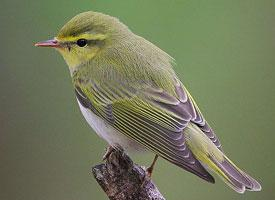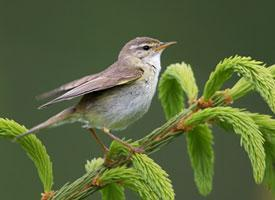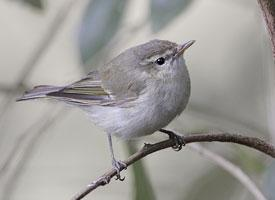
Poids et mesures
| Longueur | de 11 à 13 cm |
|---|---|
| Poids | de 8 à 13 g |
| Envergure des ailes | de 19 à 24 cm |
Description de l'animal
The Wood Warbler (Phylloscopus sibilatrix) is a captivating and melodious small bird, belonging to the leaf warbler family Phylloscopidae. It is renowned for its distinctive and enchanting song, which is one of the defining sounds of European woodlands during the spring and early summer months. This species exhibits a remarkable blend of physical attributes and behaviors that make it a subject of interest among birdwatchers and ornithologists.Physical Description:
The Wood Warbler is a dainty bird, measuring about 11 to 13 cm in length, with a wingspan ranging from 19 to 24 cm, and weighing approximately 7 to 15 grams. It exhibits a streamlined body that is adapted for agility, allowing it to navigate through dense foliage with ease. The plumage of the Wood Warbler is a beautiful blend of colors that provides it with excellent camouflage in its woodland habitat. The upperparts are a vibrant green, blending seamlessly into the leafy environment, while the underparts are a clean white, with a distinctive lemon-yellow breast and throat that adds a splash of color. The face features a striking supercilium (eyebrow) that is pale in color, enhancing its alert expression, while the eyes are dark and beady, and the legs are a pale pinkish-brown, almost blending with the bird's overall color scheme.
Habitat and Distribution:
The Wood Warbler is primarily found in deciduous and mixed forests across Europe and the western parts of Asia. Its range extends from the Iberian Peninsula in the west, across much of continental Europe, reaching as far east as the Ural Mountains and western Siberia. The species prefers habitats with a rich understory and canopy, thriving in mature forests with an abundance of old trees and dense leaf cover. During the winter months, it migrates to sub-Saharan Africa, where it occupies similar woodland habitats.
Behavior and Diet:
The Wood Warbler is an insectivorous bird, feeding predominantly on a diet of small invertebrates such as flies, caterpillars, and spiders. It is an adept hunter, often seen flitting through the canopy and understory in search of prey, using its sharp beak to expertly pick insects from leaves and bark. The bird's feeding behavior is characterized by agility and precision, as it maneuvers through the foliage with ease.
Reproduction:
Breeding season for the Wood Warbler typically begins in late April or early May, coinciding with the return of the birds to their European breeding grounds. The species is monogamous, with pairs forming strong bonds during the breeding season. The female is responsible for constructing the nest, which is a well-concealed cup made of grass and leaves, placed on the ground hidden among dense vegetation. She lays a clutch of 5 to 7 eggs, which are incubated for about 12 to 14 days. Both parents participate in feeding the chicks, which fledge approximately 12 to 15 days after hatching.
Conservation Status:
The Wood Warbler is currently classified as Least Concern by the International Union for Conservation of Nature (IUCN), indicating that it is not at immediate risk of extinction. However, like many bird species, it faces threats from habitat loss and degradation, particularly due to deforestation and changes in land use. Conservation efforts are focused on preserving and restoring suitable woodland habitats to ensure the long-term survival of this species.
In summary, the Wood Warbler (Phylloscopus sibilatrix) is a small, yet strikingly beautiful bird, whose presence and song are synonymous with the European woodland landscape. Its unique characteristics and behaviors make it a fascinating subject of study and an important component of its ecosystem.
Animaux similaires
Nouvelles photos d'animaux
Top 10 des animaux
- Dolphin gull (Leucophaeus scoresbii)
- Japanese macaque (Macaca fuscata)
- Stone loach (Barbatula barbatula)
- Greek tortoise (Testudo graeca)
- Russian tortoise (Testudo horsfieldii)
- Galápagos tortoise (Geochelone nigra complex)
- Diana monkey (Cercopithecus diana)
- Moustached guenon (Cercopithecus cephus)
- Common flying dragon (Draco volans)
- Galápagos penguin (Spheniscus mendiculus)


